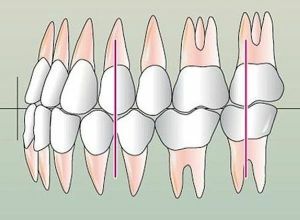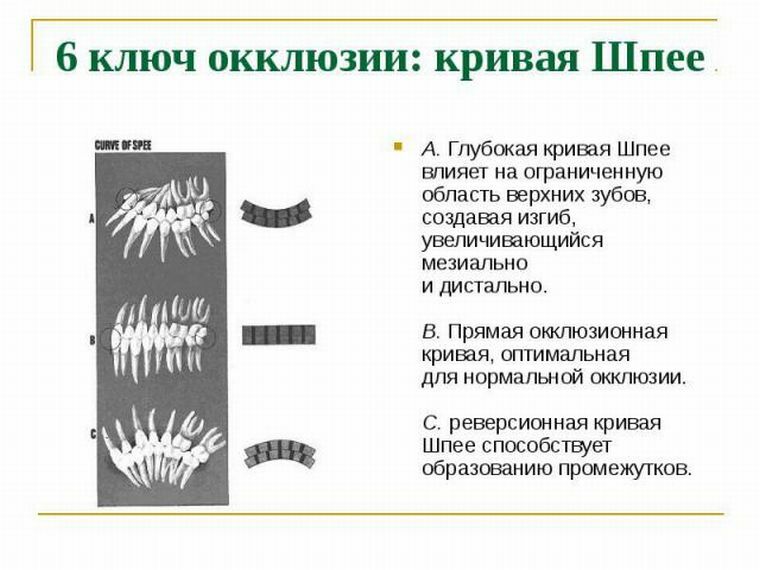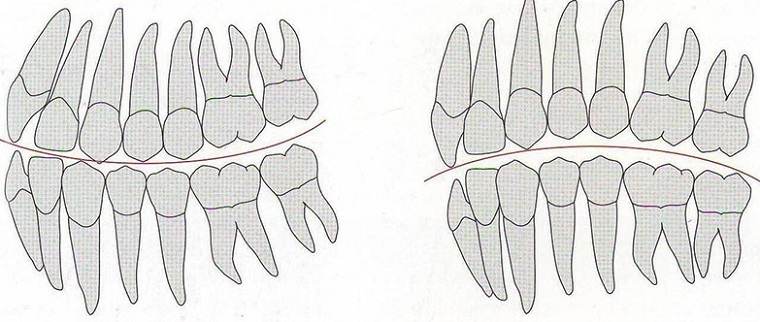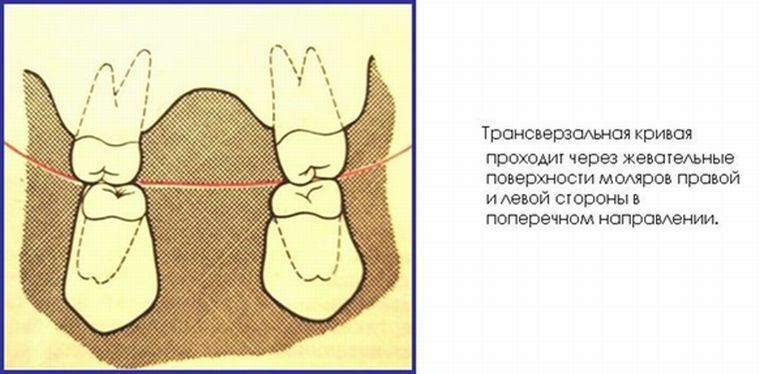 To understand why the Spee curve exists in orthodontics, it should be remembered that teeth are not only an ornament of the face. They serve a person for chewing food, so the degree of their closure - occlusion is the key to digestion, and hence to maintain the life of the body.
To understand why the Spee curve exists in orthodontics, it should be remembered that teeth are not only an ornament of the face. They serve a person for chewing food, so the degree of their closure - occlusion is the key to digestion, and hence to maintain the life of the body.
The lower jaw when chewing moves not only up and down, but also forward-backward, and right-left. This is both a grater and a saw. For if the incisors and canines are simple cutting inserts and cones, then starting from premolars, bumps appear on the working surfaces of molars. More precisely, the hillocks( with grooves between them) with multidirectional peaks.
The jaw with teeth is like a saw whose teeth are spread out in different directions. In the case of molar tubercles, this means: laterally and mesially - towards the cheek and towards the tongue, respectively. When the lower jaw moves to the right and left, food is grated between the mesial and lateral tubercles.
In addition, the height of the front and rear chewing gums is also different, which favors chewing food.
It should also be noted that both the width of the upper jaw and its teeth are larger than those of the lower jaws, and the latter do not occupy a strictly vertical position - they are somewhat unfolded relative to each other. It is this device of the chewing apparatus that facilitates the grinding of food with any properties.

What you need to know about functional occlusion:
Why the occlusal curves of
Spee, a researcher and practitioner, describe two occlusal curves: sagittal and transversal.
The first is formed by the relief of the working surfaces of molars in the sagittal( longitudinal) direction. When viewed from the front to the back, a segment of the upper jaw with teeth gently rising, and then also gradually decreasing height, forming an arc, arched down( convex) is seen. On the lower jaw there is a corresponding depression - a concave arc. This anatomical formation has a length from small molars to the farthest molar.

Sagittal occlusal curve Spee in the forward( left) and reverse( right)
What is the need for the sagittal curve of the occlusion? When the lower jaw is displaced back and forth between the molars of both jaws, free space should be formed, which is physiologically unjustified. Because of this, the load on the frontal teeth increases, while the contact of the chewing teeth is minimal and they work half-heartedly.
Curve Spee reduces energy loss to a minimum, because of the incline of the cutting mandibles of the mandibular molars forward, and the maxillary posterior back achieves a higher position of the distal tubercles of the 7th and 8th teeth of the lower jaw, while the mesial mounds of the maxillary teeth are located below the distal.
The conclusion from the above. Due to the difference in heights, the distal tubercles of the lower chewing teeth meet with the mesial teeth at the upper molars, and when the mandible is pulled out, accompanied by its lowering, an optimal degree of occlusion in the sagittal direction is achieved.
. Similarly to the sagittal "organized" and transversal arch of the clamping. It is formed due to the difference in the heights of the mesial and lateral tubercles on the molars of the lower jaw. Due to the fact that the cheek( lateral) hillocks are higher, it is seen on the section that the working surfaces form an arc - a line curved downward, that is, concave.

So, in view of the existence of a transversal occlusal curve, the lumen between the lower and upper molars when the lower jaw is moved to the left and to the right is minimized, and the grinding of food between the lateral chewing tubercles of the lower and mesial upper molars is most complete.
